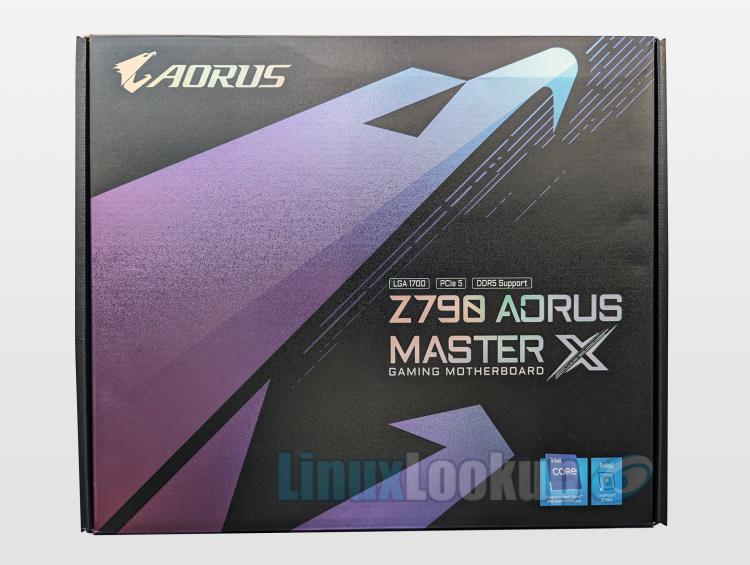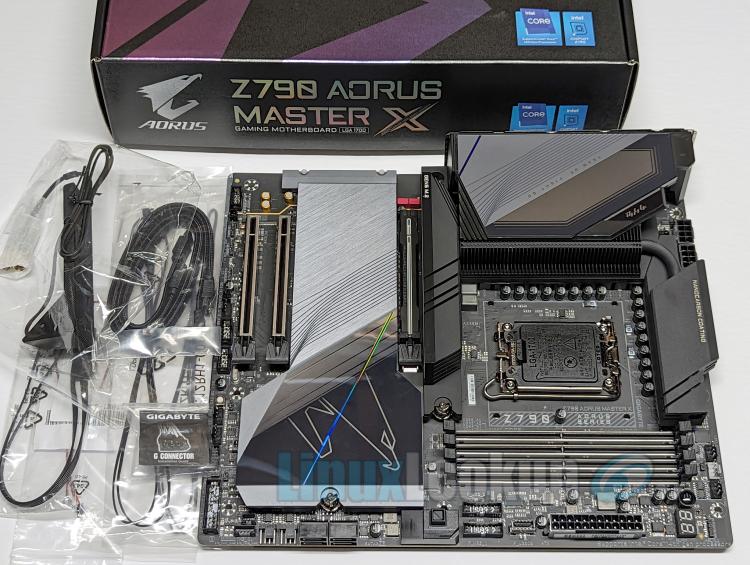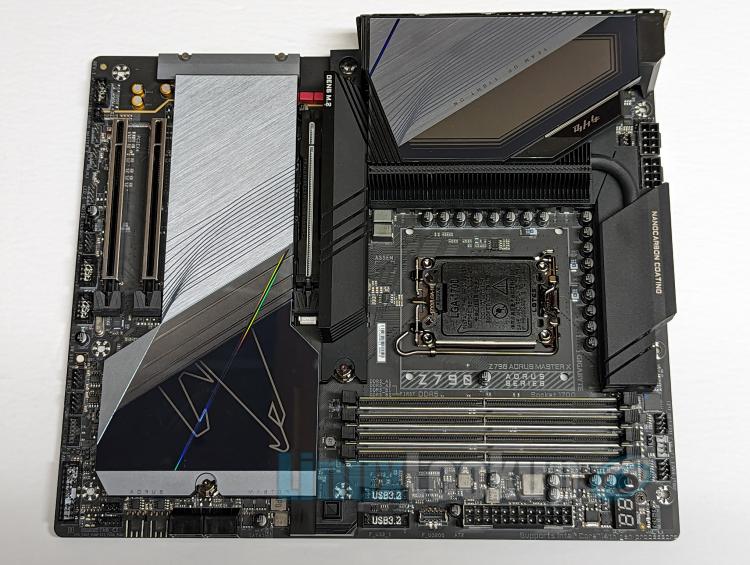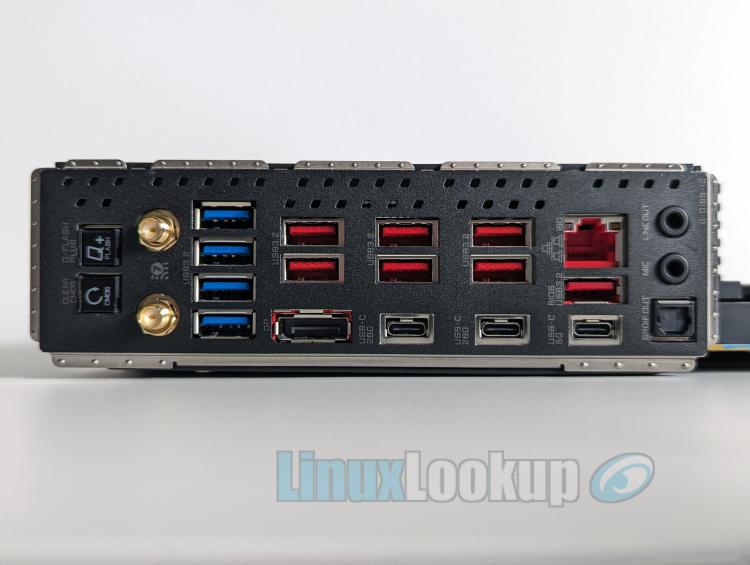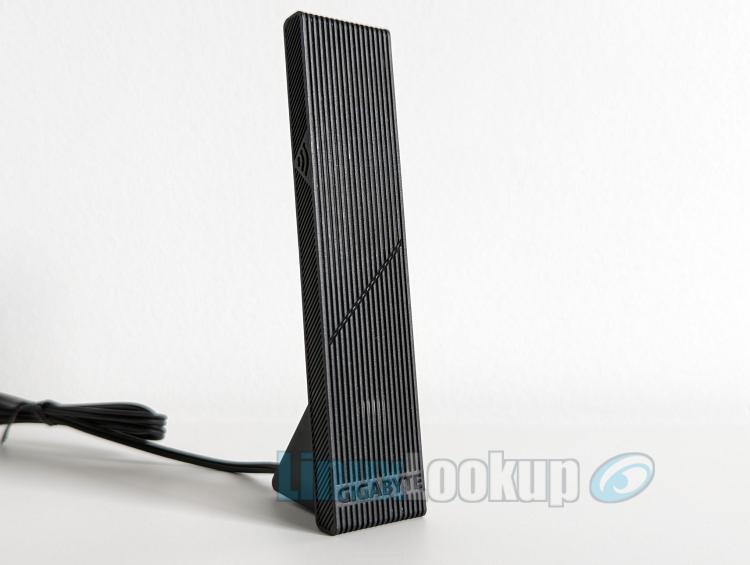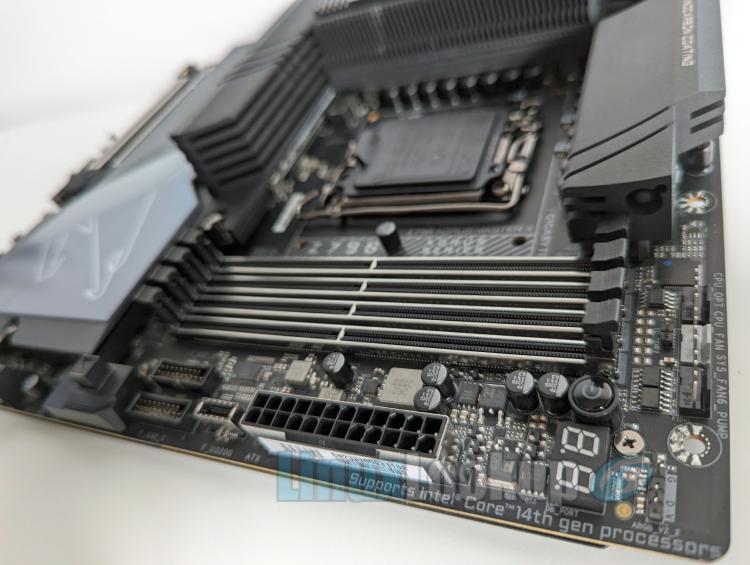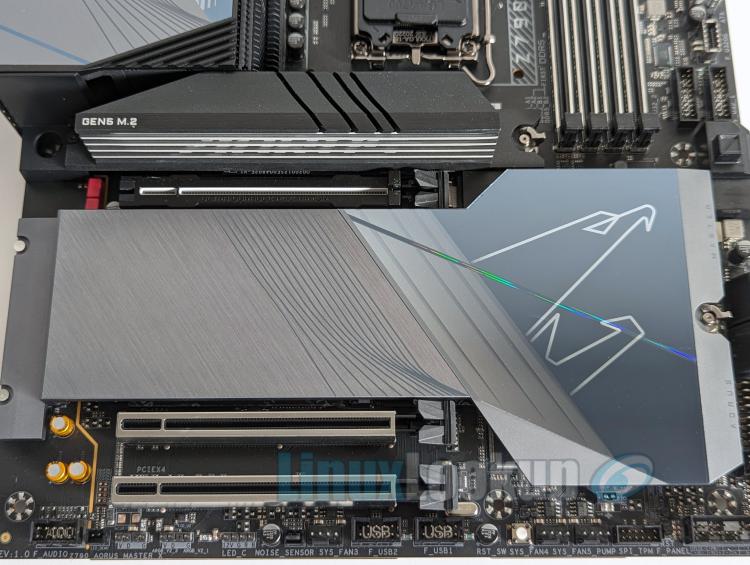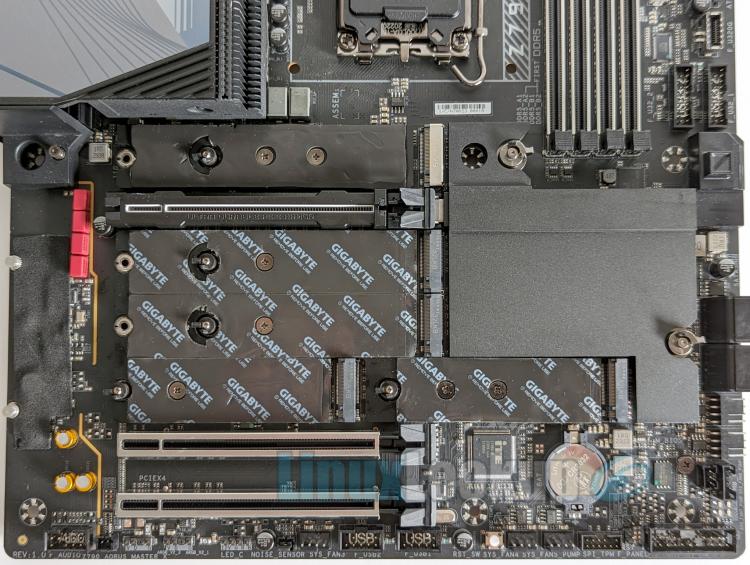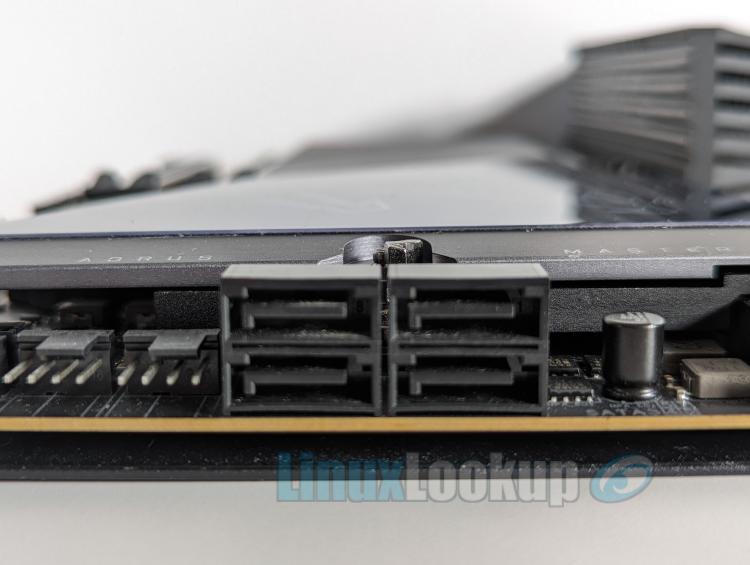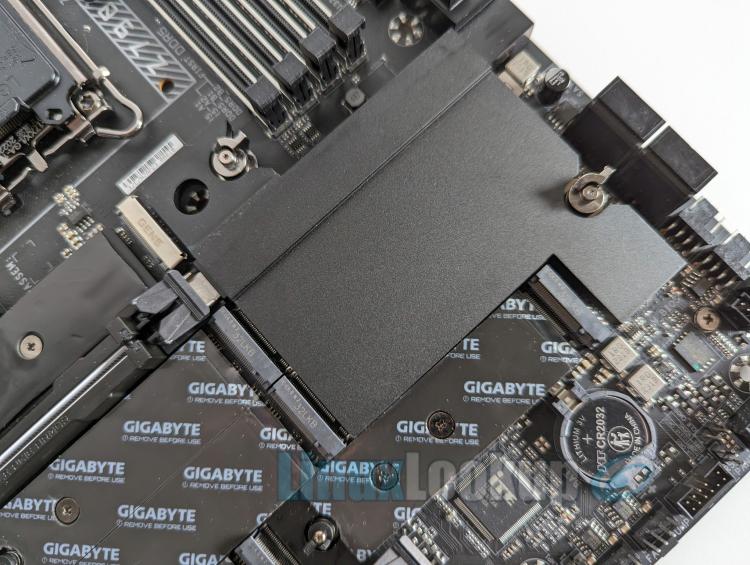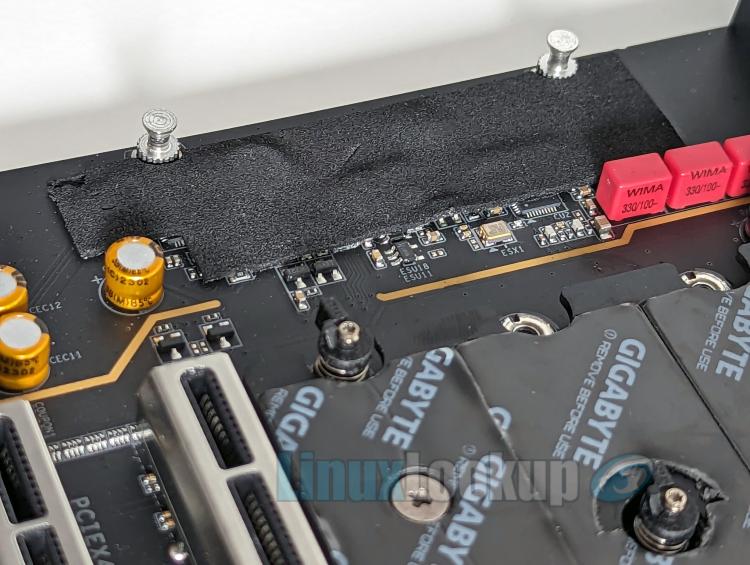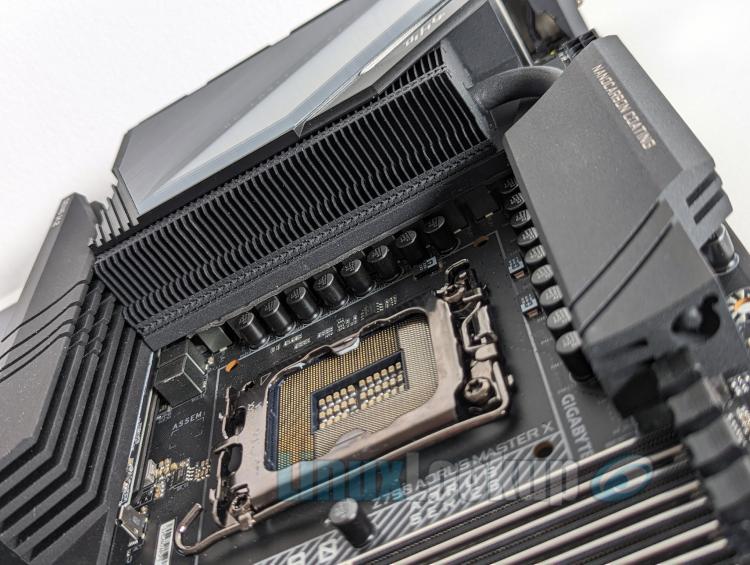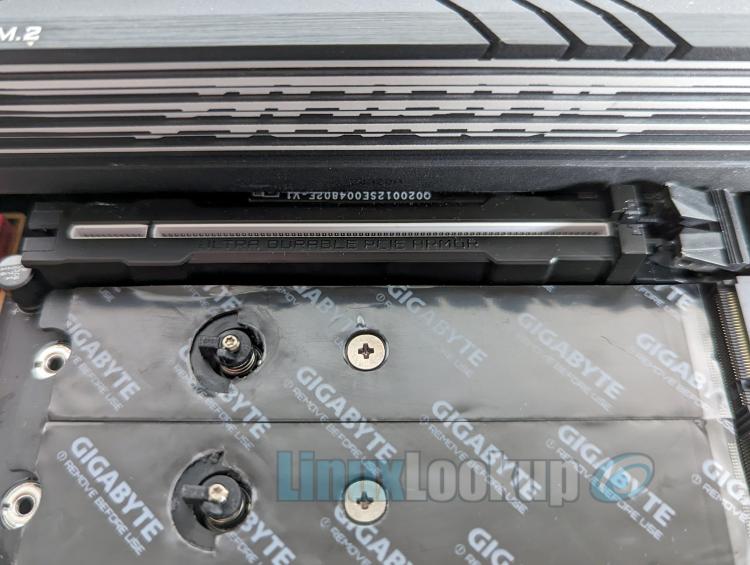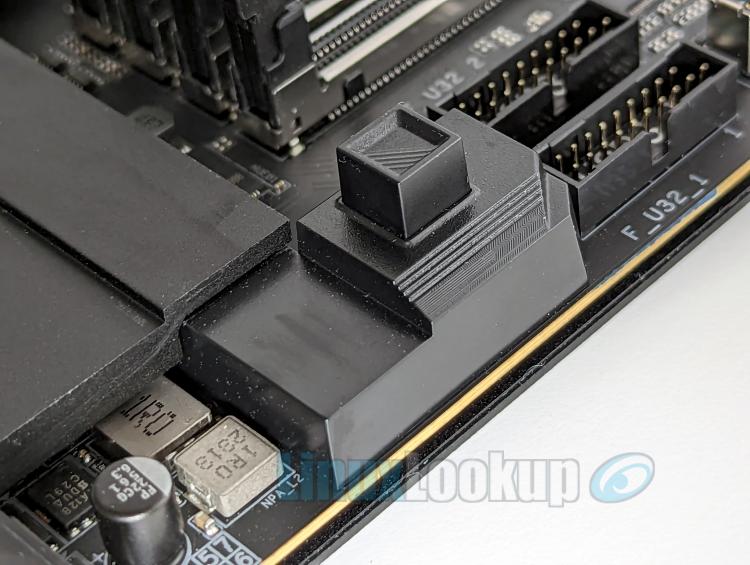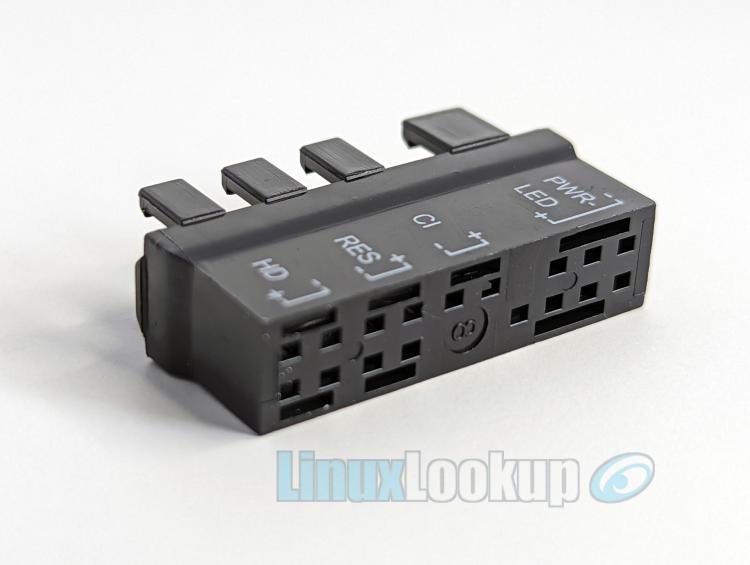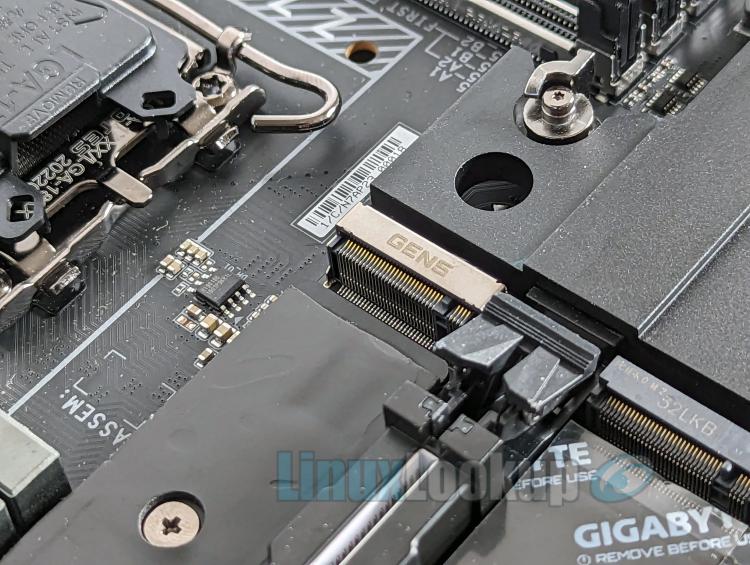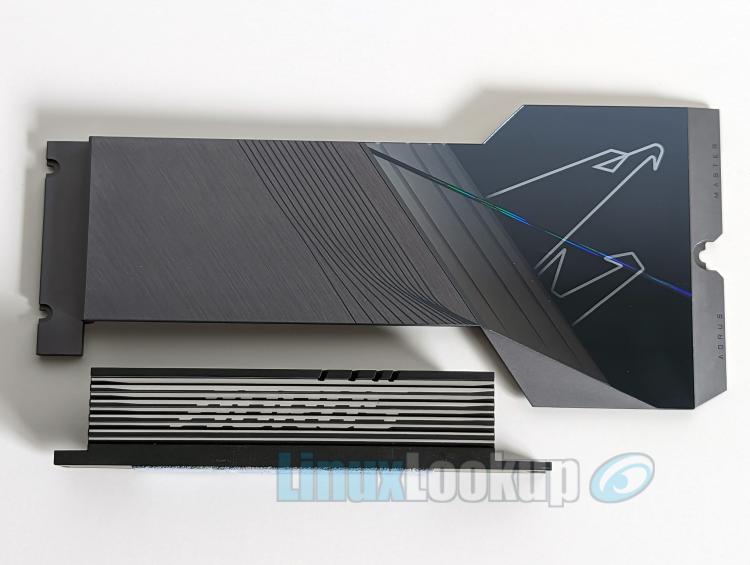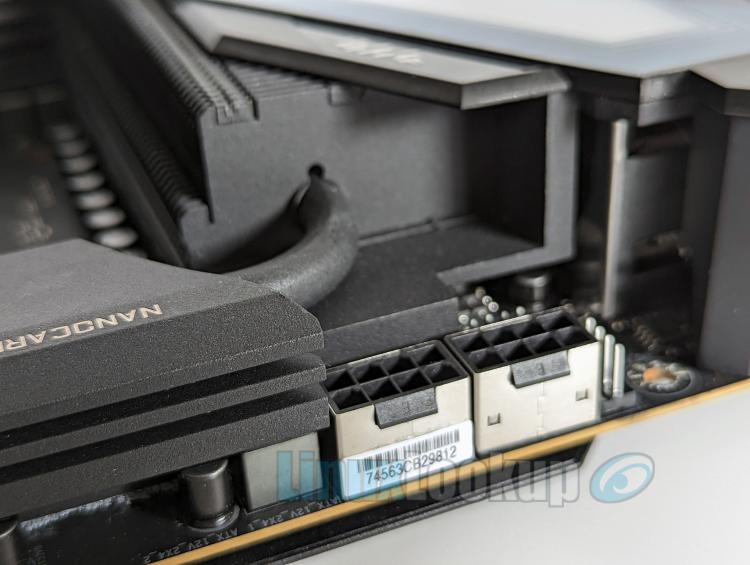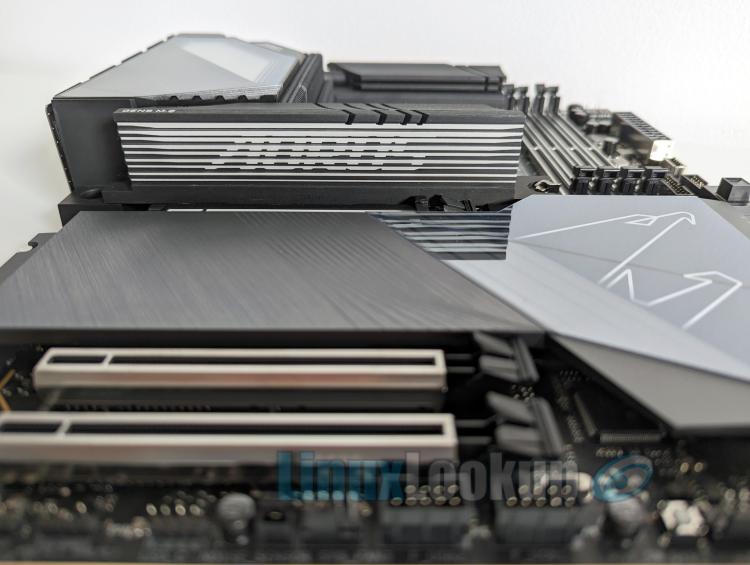GIGABYTE Z790 AORUS MASTER X Motherboard Review
The GIGABYTE Z790 AORUS MASTER X Motherboard stands out in the recently launched Z790 X Gen lineup, positioned just below the flagship model. X Gen denotes both a hardware refresh and support for the upcoming "Raptor Lake Refresh" of Intel Core 14th Gen Desktop processors, while also retaining compatibility with previous 13th and 12th Gen processors. Although GIGABYTE's Z790 X Gen series comprises five new models, each offering a unique set of features, the overarching goal here is to deliver exceptional DDR5 performance while showcasing an outstanding VRM design.
In this review, we'll highlight the predominate features of this E-ATX form factor motherboard and touch on Linux compatibility.
As of the time of writing, the GIGABYTE Z790 AORUS MASTER X Motherboard has not yet appeared on online retailer listings, but it carries an MSRP of $549.99 USD. The actual retail pricing and availability remain uncertain.
While shopping, ensure that your search results incorporate the "X" designation, as this new model can be easily mistaken for the older GIGABYTE Z790 AORUS MASTER released back in 2022.
Included within the retail box is everything required for motherboard installation and connectivity. Two braided latching SATA cables (one straight & one 90-degree angle), an external WiFi / Bluetooth antenna, a 4-pin RGB LED lighting strip extension cable, one noise sensor cable, two thermal sensor cables, and a G-connector.
It always pleases me to see the G-connector is still provided with GIGABYTE motherboards. If you're not familiar, the G-connector is a helpful plastic bracket used for attaching front panel headers when there are limitations in terms of physical space or visibility. You can easily connect your front panel wires to the G-connector using the clearly labelled pin assignments, and then attach it to the motherboard's front panel header. While other manufacturers have introduced similar connectors over the years, GIGABYTE stands out as one of the few that consistently includes this convenient little component with their motherboards.
Aesthetic appeal is a strong point for the GIGABYTE Z790 AORUS MASTER X Motherboard. Characteristics such as an I/O shroud with RGB that lights up AORUS branding, brushed aluminum M.2 cover with glass-like acrylic accent displaying the AORUS falcon, alongside subtle hints of grey styling offer a great contrast against an all black printed circuit board (PCB), and matte black heatsinks. Combined, these visual elements make for a beautiful piece of hardware worthy of display in a glass panel case build.
If you prefer absolute darkness, the multi-function reset button can also be reconfigured as a RGB switch to turn off all lighting effects on the motherboard.
Flipping the board over to view the backside, we can see a NanoCarbon coated aluminum backplate — not only does this add extra physical rigidity to protect the 8-Layer PCB, but it provides enhanced heat dissipation, along with the NanoCarbo coating claiming to deliver 3x the thermal conductivity and up to a 10% temperature reduction.
Taking things like the backplate, all heatsinks, the Ultra Durable (UD) enhancements, and E-ATX form factor (30.5cm x 26.0cm) into consideration, overall weight of this board is noticeably heavy.
As we'd expect from a premium Z790 motherboard, both the external and internal connectivity features are extensive.
The back panel is protected by a standard pre-mounted I/O shield, but now features small vents to lower temperatures up to 7°C according to GIGABYTE. Starting from the top left, you'll find the Q-Flash Plus button, Clear CMOS button, SMA antenna connectors (2T2R) for WiFi 7 / Bluetooth 5.3, four USB 3.2 Gen 1 (blue) ports, seven USB 3.2 Gen 2 (red) ports, a DisplayPort, two USB Type-C ports with USB 3.2 Gen 2x2 (20Gb/s) support, one USB Type-C port with USB 3.2 Gen 1 (5Gb/s) support, 10GbE LAN port (RJ-45), an optical S/PDIF audio connector, and two high definition audio jacks supporting 2/4/5.1-channel configurations.
On-board graphics via DisplayPort 1.4a (max resolution 4096x2304@60 Hz) is present if you have a supporting Intel Processor, otherwise a discrete GPU is required.
Personally, I do not have a need for the abundance of external USB 3.2 ports, and am willing to sacrifice a few for the inclusion of a USB 4 (40 Gbps) port or two — a missed opportunity in my opinion.
When GIGABYTE announced the refresh of the Z790 AORUS, they certainly meant it in all regards. Even the external WiFi/Bluetooth antenna included with previous generation AORUS motherboards has been redesigned. This new, slimmer, ultra-high-gain antenna is approximately 25% smaller in size. Although it retains a magnetic base for attachment to a metal PC case, the design no longer features adjustable angles or a rubber base to prevent slippage when placed on non-metallic surfaces.
On the topic of wireless, I should also mention that there appear to be three hardware revisions of the Z790 AORUS MASTER X. From what I can tell, the only difference is the on-board wireless module, which can be either a Qualcomm WiFi 7 QCNCM865 (PCB rev. 1.0), MediaTek WiFi 7 MT7927 RZ738 (PCB rev. 1.1), or Intel WiFi 7 BE200 (PCB rev. 1.2). Revision 1.0 was identified in this motherboard review.
Looking inward at the internal connectivity, I've observed a USB Type-C header with USB 3.2 Gen 2x2 support, two USB 3.2 Gen 1 headers, two USB 2.0/1.1 headers, and dual Thunderbolt add-in card connectors. Naturally, GIGABYTE sells add-in cards to utilize these connectors. Also present are three addressable RGB Gen2 LED strip headers, one RGB LED strip header, two temperature sensor headers, along with a variety of system fan and water cooling pump headers
As seen with previous AORUS MASTER motherboards, GIGABYTE includes some advanced diagnostic features, such as voltage measurement points for multimeters, a POST Code LED for debugging, and convenient quick control buttons for power and reset. These internal power and reset buttons allow users to quickly turn on/off or reset the computer in an open-case environment when they want to change hardware components or conduct hardware testing.
Storage configuration options include a total of five M.2 connectors, supporting one PCIe 5.0 x4/x2 SSD, along with one PCIe 4.0 x4/x2 SSD allocated directly to the CPU lane, and the remaining three PCIe 4.0 x4/x2 SSDs assigned to the chipset. The Intel Z790 chipset offers RAID 0, RAID 1, RAID 5, and RAID 10 support for NVMe SSD storage devices. These connectors support various Type 25110/2280 M.2 SATA and PCIe SSDs, so I'd advise you to refer to the online manual for clarification before making any storage purchases.
As PCIe Gen5 NVMe SSDs typically run hot, GIGABYTE has included an M.2 Thermal Guard backplate on the primary M.2 connector, which is covered by a Thermal Guard XL (extra-large heatsink). This heatsink is quoted to deliver up to 9x the dissipation surface area compared to the previous generation Thermal Guard. The remaining four M.2 sockets are equipped with a thinner passive heatsink and thermal pad backing as well. These are effective in preventing throttling, improving operating temperatures, and ensuring optimal performance and reliability.
Both M.2 heatsinks feature a new EZ-Latch Click design. These toolless latches are made of metal and have a spring loaded quick-release mechanism, eliminating the need for those tiny retention screws. You can simply drop them in and click. Similarly, all the M.2 sockets feature EZ-Latch Plus, which follows the same concept, but these latches are plastic and do not appear as durable.
I cannot express my appreciation enough for GIGABYTE's EZ-Latch designs. It's such a simple yet effective solution for effortless M.2 installation and truly needs to become standardized across all motherboards.
To accommodate legacy storage, there are four Serial ATA 6Gb/s connectors positioned in the bottom corner of the board. These SATA connectors are stacked in pairs with a 90-degree orientation, offering support for RAID 0, RAID 1, RAID 5, and RAID 10 configurations.
The Intel Z790 chipset remains unchanged between the previous generation and these new Z790 X Gen motherboards. You'll continue to enjoy all the exceptional features that come with Intel's high-end Z790 chipset. The only noteworthy item here is that the chipset is passively cooled with a heatsink.
Audio on this Z790 AORUS MASTER X is identical to the non X Gen version from last year, as it recycles an on-board Realtek ALC1220-VB Audio Codec with an ESS ES9118 DAC. While there's nothing new, it still provides excellent audio for the majority of use cases.
I didn't want to remove the thermal pad, but the System-on-Chip (SoC) is located directly underneath.
Power delivery on the GIGABYTE Z790 AORUS MASTER X is impressive, boasting a 20+1+2 phase VRM rated at 105A SPS, accompanied by two large NanoCarbon coated aluminum heatsinks. This VRM configuration is more than capable of handling Intel's 12th, 13th, and upcoming 14th Generation Core Desktop Processors.
Above the CPU socket, you'll find two 8-pin EPS connectors (one required) for supplying power to the processor, and both are UD reinforced.
The Z790 AORUS MASTER X places a strong emphasis on improved DDR5 memory performance, achieved through advancements in both software and hardware. First, it features an entirely redesigned BIOS user interface, which includes one-click features such as DDR5 XMP Booster to automatically boost your DDR5 module to the highest profile, or DDR5 Auto Booster to elevate native DDR5-5600 to 6000. Additionally, it supports XMP 3.0 User Profiles for DDR5 overclocking up to 8266 MT/s.
On the hardware side, the implementation of technologies such as Isolated Memory Routing, Back Drilling Technology, and Shielded Memory Routing assists in delivering the best DDR5 performance possible.
There are four UD reinforced single-latch DIMM sockets, comprising a dual-channel memory architecture that supports up to 192GB of DDR5 system memory and a memory frequency of up to 8266MHz (O.C).
Three full-length PCIe x16 expansion slots are incorporated onto the board. The top primary slot is designed to accommodate a graphics card, supporting PCIe 5.0 running at x16 and integrating with the CPU. Notably, this slot also shares bandwidth with the M2C_CPU connector, operating at up to x8 mode when a device is installed in the M2C_CPU connector. The two remaining PCIe slots support PCIe 3.0, with the middle one running at a maximum of x4 and the bottom one at x1, both of these are integrated with the chipset.
Continuing with the GIGABYTE Ultra Durable (UD) theme, reinforcement is present on all PCIe slots.
Some extra attention is given to the primary PCIe slot, which features EZ-Latch Plus. This easily accessible button, located on the far edge of the board, allows for quick release of the GPU, eliminating the frustration of wedging a screwdriver between your GPU and oversized CPU air cooler to depress the retention clip.
Linux Compatibility
For Linux compatibility testing, I typically validate hardware using the current LTS release of Ubuntu. While this approach appeals to a broad userbase, there are instances when the hardware necessitates downstream Kernel support, and this is one such case. Instead of mainlining the Kernel to Ubuntu, I test using Manjaro, an Arch Linux based distribution that offers the latest downstream Kernel.
Linux support for WiFi 7, specifically the Qualcomm QCNCM865 module, was my concern here. After some initial testing, it was determined that WiFi 7 on this motherboard is currently not in a working state. This issue is attributed to the evolution of Linux drivers and will take some time to mature regardless of Linux distribution installed. For those who prefer to use a wired connection, the current lack of WiFi 7 support may not be a concern.
Except for the WiFi adapter, everything else operates correctly under default conditions with Manjaro Linux 23.0.2 (Urano) GNOME Desktop installed. During the interim period between writing this Linux hardware review and its publication, Ubuntu 23.10 (Mantic Minotaur) was released. Despite not being a Long-Term Support (LTS) version, 23.10 includes the 6.5 Linux Kernel and would also function well with this motherboard.
Linux Compatibility Configuration
- Processor: Intel Core i7-13700K
- Storage: NVMe M.2 SSD PCIe Gen5
- Memory: Crucial DDR5-5200 64GB
- Graphics: Intel iGPU
- Distribution: Manjaro Linux 23.0.2
- Linux Kernel: 6.5.3-1-MANJARO
- OS Install Options: Default
- BIOS Version: F4
- BIOS Settings: Default
- Overall Result: Stable
Gallery
Conclusion
The Good - Pros- Intel Core 14th Gen Desktop processor support
- Full PCIe 5 support (PCIe 5.0 x16 slot, a PCIe 5.0 M.2 socket, DDR5)
- Excellent power delivery & overclocking potential
- Five M.2 connectors, with included heatsinks
- EZ-Latch designs are must-have features
- Ultra Durable (UD) features on all PCIe, DIMM, M.2 and all power connectors
- NanoCarbon coated aluminum backplate & heatsinks
- WiFi 7 offers 5.8 Gb/s transfer speeds with multi-link mode
- Bluetooth 5.3
- 10GbE LAN port
- An excess of USB ports
The Bad - Cons
- No USB 4 ports
The Ugly - Issues
- Product manual is not available from the GIGABYTE website
- Product manual from AORUS website cannot be viewed, PDF file is corrupt
The Verdict - Opinion
The GIGABYTE Z790 AORUS MASTER X Motherboard delivers as advertised, providing true innovation that both enthusiasts and novices will appreciate. While it may be expensive, you're getting exactly what you've paid for in this motherboard — a high-end platform for both current and upcoming next-generation Intel Core Desktop processors, alongside an overabundance of advanced features, some of which might be considered overkill, but in an absolute positive way.
While I'm not particularly fond of the term future-proofing, GIGABYTE's new Z790 X Gen lineup not only offers a clear upgrade path to the latest PC technology but also effectively prepares you for what's forthcoming with the anticipated launch of an Intel Raptor Lake Refresh this fall.

